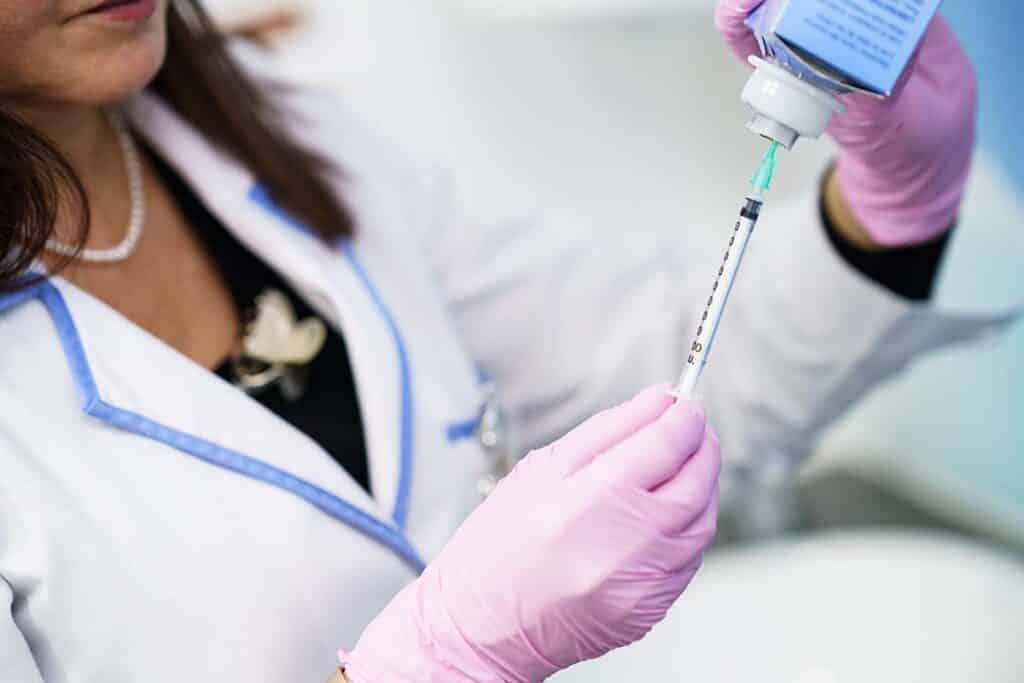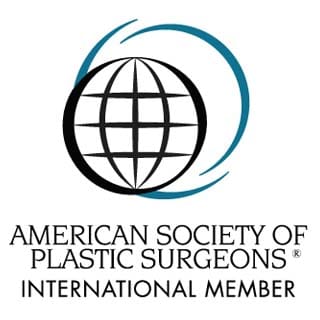
Do you know what eye shape you have? Are your eyes round or almond-shaped, or maybe you have extra skin around your brows that hangs over your eyelids? There are various eye shapes, and the type you have is largely determined by your genes.
The appearance of the eyes, however, changes over time due to natural ageing and other environmental factors. In your younger years, your eyes may seem bigger and more prominent. However, as you age, they tend to become hollower, hooded, and smaller.
In this article, we will look at hooded eyes, a common shape that can be inherited or developed as a result of ageing. We will go over what those types of eyes are, why you might have them, and how they can be corrected.
Some folks possess this eye form from birth, but others acquire hooded eyes as they get older. Those who were born with hooded eyes may find that the “hoods” become more noticeable as they mature.
Hooded eyes are a type of eye shape in which the upper eyelid is partially or completely hidden by excess skin or hood. It can give the illusion of less space between the brow bone and lash line, giving the appearance of hooded eyes. It can also make your eyes look smaller, or asymmetric if only one eye is affected. In very severe cases, hooded eyelids can cause vision obstruction.
Hooded eyes are often an inherited trait, but you may also develop them later in life. The hooding effect can be presented in both eyes, or only affect one eye. Most of the time, hooded eyes do not cause any concerns other than those related to appearance.
You can determine if you have hooded eyes by carefully examining the appearance of your upper eyelids. If your upper eyelid skin covers a significant portion of the crease, so that you cannot see it when your eyes are open, then you most likely have hooded eyes. Another way to determine is to observe how your eyes look when you raise your brows. If the eyelid skin moves upward, revealing more of the fold, then your eyes are probably hooded.
People frequently confuse hooded eyes with droopy eyes, but these are not the same thing. Droopy eyelids refer to a condition called ptosis (we have a detailed article on the most common ptosis causes), in which the upper eyelid droops down and covers a portion of the pupil. It can impair both the person's ability to keep the eyes open as well as their ability to see normally. In addition to ageing, droopy eyelids may also be caused by nerve damage or other medical conditions. Hooded eyes, on the other hand, are not associated with any health issues. They can either be a normal hereditary trait or an effect of skin ageing.
You may have hooded eyes for a variety of reasons, including:
Hooded eyes are a normal variation in eye shape and are not a medical condition. They normally do not pose any health risks or require medical treatment. However, hooded eyelids can be a cosmetic concern for some people, as they can give you a tired appearance and make you look older.

Cosmetic droopy eyelid surgery is one of the fastest and most effective ways to correct hooded eyes. It also provides more permanent results compared to other non-invasive solutions. There are two types of surgical procedures that can help you improve the appearance of hooded eyes, including:
Upper blepharoplasty is a surgical procedure that involves removing excess skin, fat, and muscle from the upper eyelids. The surgery can be especially beneficial for people who have hooded eyes. It can improve the appearance of the eyelids and give the eyes a more refreshed and youthful appearance. During the procedure, the surgeon makes an incision along the natural crease of the upper eyelid and removes the excess skin, fat, and muscle. The incision is then closed with sutures, and the skin is lifted, reducing the hooding appearance.
A brow lift is a surgical procedure that lifts the eyebrows. The procedure is intended to correct sagging eyelids or low brow position, which can result in hooding eyes. The surgeon makes incisions along the hairline and removes excess skin, fat, and muscle during a brow lift. The brows are then raised and secured to a higher position. A brow lift can be an effective treatment for hooded eyes. It can aid in the reduction of sagging skin in the lids and the creation of a more open and refreshed appearance.
It's important to note that both blepharoplasty and brow lift are surgical procedures that carry some risks and requires a period of recovery. Therefore, you should thoroughly discuss the benefits and potential complications of the operations with a qualified plastic surgeon before making a decision.
Here are some non-surgical treatment options you can benefit from if you have hooded eyes, but you should read our full guide for more information on ptosis treatment without surgery.

Dermal fillers are injectable cosmetic substances that can be used to add volume, plump up skin, and smooth out wrinkles and fine lines. They can help improve various areas of the face and restore a more youthful appearance. With regard to hooded eyes, injectable fillers can be used to add volume to the area under the brow bone, creating a lifted appearance. However, you need to understand that the effects of this procedure are not permanent, and touch-up treatments may be required to maintain the desired look.

Botox is a popular cosmetic procedure used to temporarily reduce the appearance of wrinkles, fine lines, and other signs of ageing. When it comes to hooded eyes, Botox injections can help relax the muscles responsible for causing the hooding appearance. The treatment can make the eyes appear more open and less tired. The results of Botox usually last for 3-6 months. This means that you should repeat the injections after this time in order to maintain the desired effect. Keep in mind that Botox should only be administered by a licensed healthcare provider who is trained and experienced in performing the procedure.
Radiofrequency (RF) treatment is a non-invasive cosmetic procedure that uses radiofrequency energy in order to tighten the skin and stimulate collagen production. It can be used to minimize the appearance of wrinkles, fine lines, and sagging skin in various parts of the face and body. The RF treatment is effective in improving hooded eyes. It can tighten the skin in the brow and upper eyelid area, reducing the hooding appearance and giving the eyes a more open and refreshed look. However, multiple sessions may be needed to achieve optimal results, and the effects may not be as dramatic as those obtained from more invasive procedures such as a brow lift and blepharoplasty.
Laser resurfacing is a cosmetic procedure that uses laser energy to remove the outermost layer of skin and stimulate the production of new skin cells. It can successfully improve the signs of ageing, as well as skin texture, tone, and overall skin health. Laser resurfacing is an effective treatment for hooded eyes. It can tighten the skin around the brow and upper eyelids, giving you a younger appearance. However, as with any non-surgical procedure, you may need several sessions to achieve the desired results.
Please note that non-surgical options for hooded eyes may not produce the same results as surgery and results may vary from person to person. Consulting with a dermatologist or cosmetic surgeon can help you determine what is the most suitable treatment for you.
Natural remedies may help you refresh the look of your eyes as well as maintain healthy skin. However, they cannot change the shape of your eyes or remove saggy eyelids. As we mentioned above, in many cases, hooded eyes are a normal hereditary trait which can be successfully corrected through plastic surgery. At-home treatments might be a good option if you want to glow up the skin around your eyes and prevent it from sagging. Here are some natural methods you may want to try.
Makeup can help you hide your hooded eyes. All you need is to use a proper technique that will create an illusion of a lifted eyelid. For example, using a light-coloured eyeshadow on the inner corners of the eyes and a darker shade on the outer corners can make your hooded eyes look less apparent
It is important to keep the skin around the eyes hydrated and to use skincare products that will tighten and firm it, in order to prevent your upper lids from sagging any further.
Gentle eye exercises, such as eyebrow raises and eyelid lifts, can help strengthen the muscles around the eyes and give a more lifted appearance over time.
Eyelid tape is a double-sided adhesive tape that is used to create a temporary crease. This technique is commonly used in Asian beauty practices to enhance the appearance of the eyes. Eyelid tape can help you lift the excess skin that sags over your natural crease and create a hood-like appearance.
Keep in mind that natural remedies may not provide a drastic improvement and may take longer to show results than other treatment options.

Dr. Shenthilkumar Naidu (Dr. Shens) is a Ministry of Health accredited Consultatn Plastic Surgeon with extensive expertise in cosmetic and reconstructive surgery. He is renowned for his advanced techniques in body contouring and aesthetic enhancements. For more information, visit Shens Clinic.
Monday – Friday: 09:00am – 06:00pm
Saturday: 09:00am – 02:00pm
Sun and PH: Closed
(Strictly by appointment only)

Copyright ⓒ Shens Clinic | Privacy Policy | Terms and Conditions .